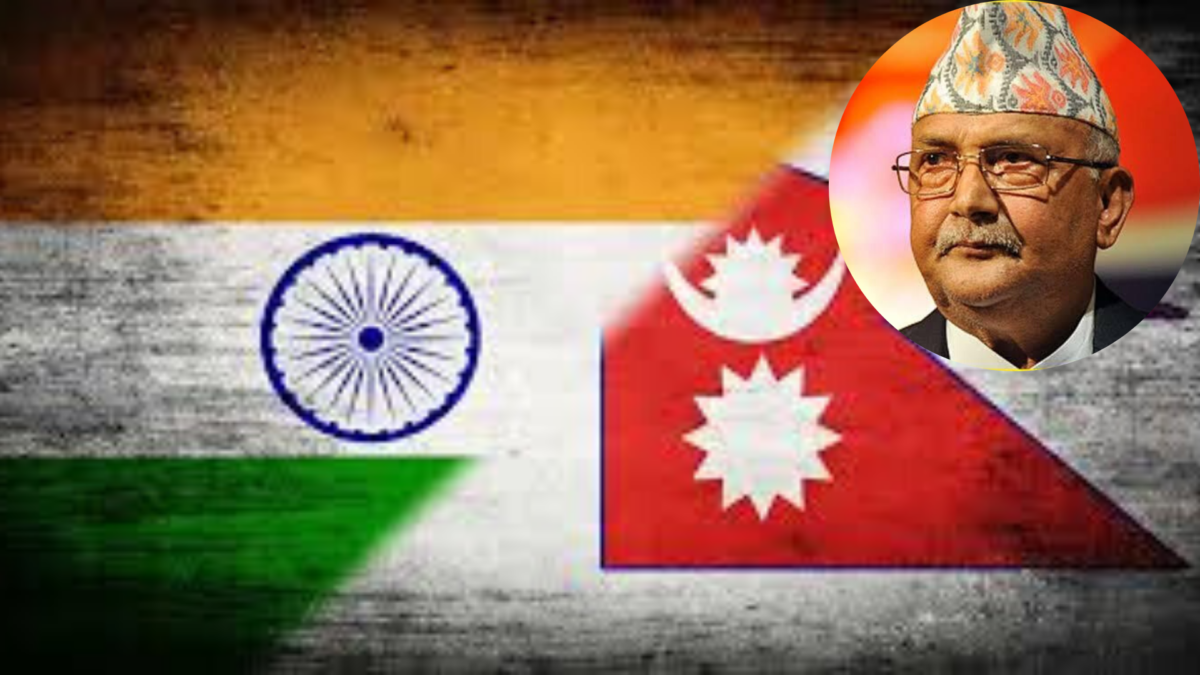The troubles between India and Nepal are not seeming to end. Almost every week there is a new trigger for animosity. The current downward spiral started when Indian Minister of Defence, Rajnath Singh inaugurated a road to Lipulekh, a territory that Nepal claims to be its own. This was followed by Nepal publishing a new map showing disputed territories with India as a part of Nepal with even their parliament endorsing the same. Matter got complicated further when Indian Army Chief Manoj Mukund Naravane hinted at China’s hand at play in the map controversy. Since then, a mudslinging festival has ensued between media of the two countries with even social media taking an active part with equally colourful remarks.
Initially when Nepali Prime Minister KP Oli indulged in cartographic aggression against India, he received a lot of praise from all quarters with even Bollywood actors who belong to Nepal, hailing the move as a bold one. Even the opposition parties that initially had reservations in endorsing the new map, finally came around and voted positively.
However, all the support and praises for Oli for taking on India are now dying a slow death. Latest example is Oli’s statement on Hindu god, lord Sri Rama where he claimed that Sri Rama was born in Nepal. He also claimed that India’s Ayodhya is fake Ayodhya whereas the real Ayodhya is in Birgunj, Nepal. This statement by PM Oli not only irked Indians but it has also led to a lot of criticism against Oli domestically. Nepali diplomats and politicians alike are of the view that Oli’s remarks were insensitive and that they can further damage ties between Nepal and India especially on a people-to-people level. They believe that Oli got carried away by coverage in Indian media and started to think that the anti-India campaign will bring him more advantage on the home front. Nepali Congress party who had endorsed the publishing of new map by Nepal also criticized the PM for his irresponsible statement and demanded his resignation over this, citing loss of moral grounds to rule.
The foreign ministry of Nepal quickly issued a statement in order to do damage control saying that the PM remarks were only referring to undergoing studies on Ramayana and that the tradition of Bibhaha Panchami where a marriage procession arrives in Janakpur from Ayodhya every year is much valued in Nepal. While Oli’s statement caused much furore with even Nepali citizens objecting to his statement for hurting their sentiments, truth is Oli’s anti-India plank is now losing its sheen. With time, a realization has dawned in Nepal’s political, diplomatic and strategic circles that healthy relations with India are the only way forward as India’s support is critical to Nepal’s long-term well-being.
In July 2020, among all the bad news on Covid pandemic and various geopolitical tussles, good news came from Nepal. The Himalyan country is now officially a “lower-middle-income country” with its per capita income reaching $1090 in 2019. While the good news may not last long as the growth in the country is set to hit a low due to pandemic but one concrete signal to look for is the rise of the aspirational Nepali. Within just 10 years, Nepal has more than doubled its GDP from US$ 12.8 billion in 2010 to US$ 30.6 billion in 2019. If we unpack Nepal’s growth story, we find that its economic dependence on India continues to remain high. Nepal’s imports from India account for 2/3rd of its total import, whereas China contributes just 14% of its total imports. Similarly, India accounts for 60% of Nepal’s total exports whereas China receives only 2% of Nepal’s total exports. According to a report by the Asian Development Bank, exports are a key pillar of Nepalese economy that can drive its journey to become a lower-middle income country. Remittances are also an important part of the Nepali growth story to which India contributes around 15% which comes to roughly 4-5% of Nepal’s GDP. Nepal’s geography is such that it continues to depend on India for its international trade. As a landlocked country, Nepal uses Indian ports for trade and there also exist multiple transit points on the long, open border with India from Mechi in the east to Mahakali in the west. China has time and again intervened to reduce this dependence but the terrain between China and Nepal is far from friendly. The nearest port for Nepal is China more than 3000 km away whereas the nearest port in India is just 774 km away! Nepal and India also share a complex informal web of trade which has a centuries old history behind. All these factors make India an indispensable partner for Nepal’s economic growth. An average aspirational Nepali recognizes this fact. Sagar Ghimire, a journalist with Republica Nepal has also sensed this mood, “Oli came to power with a promise of development and stability but his statements are now spoiling long-term relations with India”.

After the tussles, a realization in Nepal of India’s importance as a development partner is slowly setting in. There is at the same time a need for maturity on both sides. The informal system of economic linkages between India and Nepal is fast decaying. Despite all the leverage that India holds on Nepal, China is now dominating the investments in the country. There is an immediate need to refresh the ties and modernize trade links between the two. It would be possible if they move away from conflicts and focus on their development priorities together.
About the Author

Dr. Monica Verma is a PhD in International Relations from South Asian University. Her research focuses on South Asia, Political Economy and Indian Politics. She tweets at: @trulymonica..




























 WhatsApp us
WhatsApp us
Pingback: ai nude